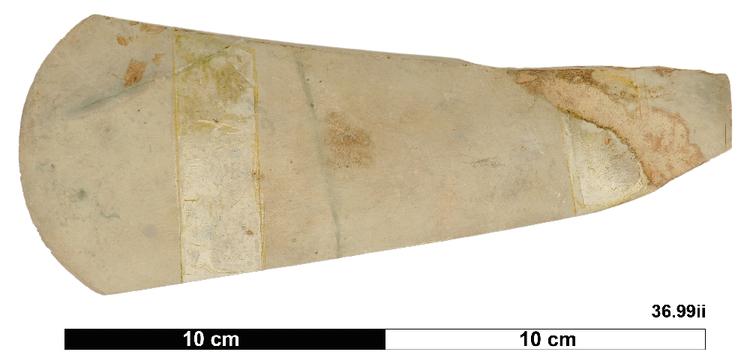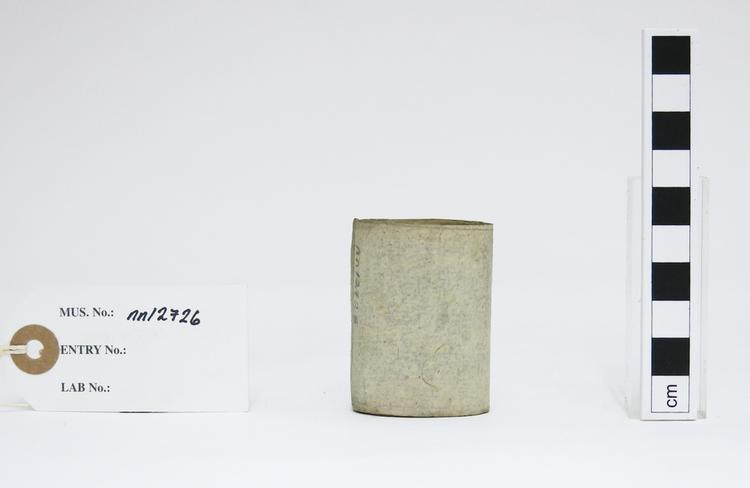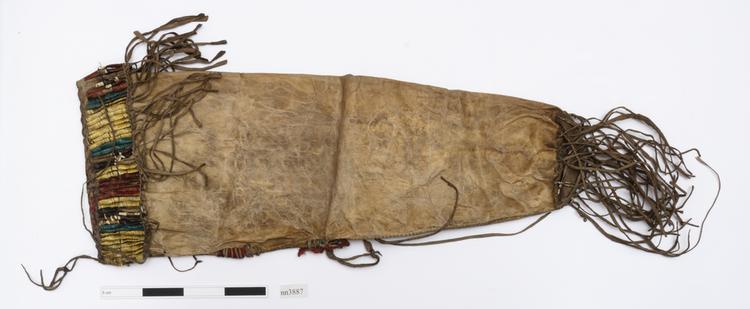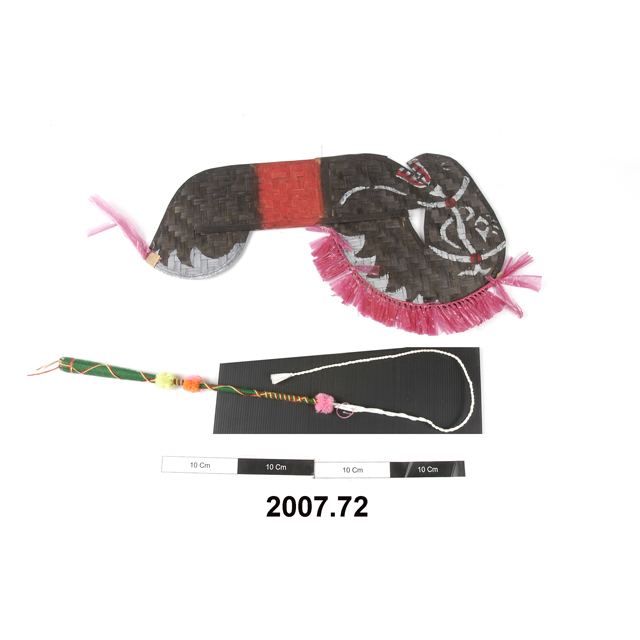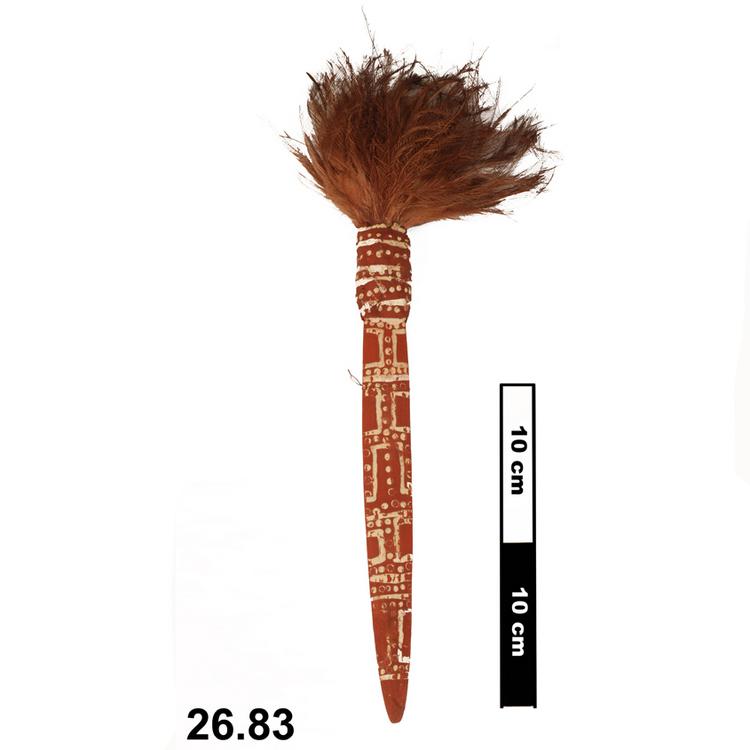
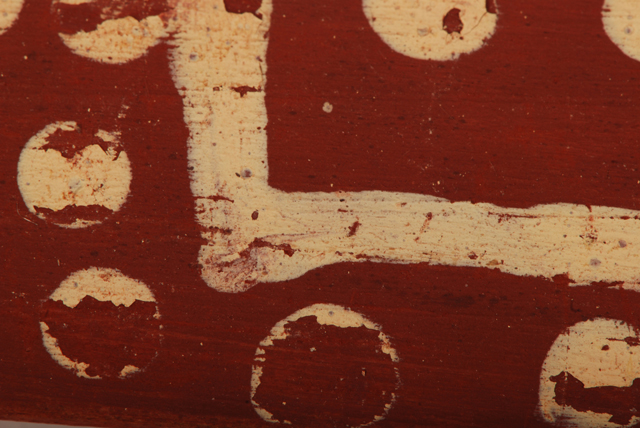
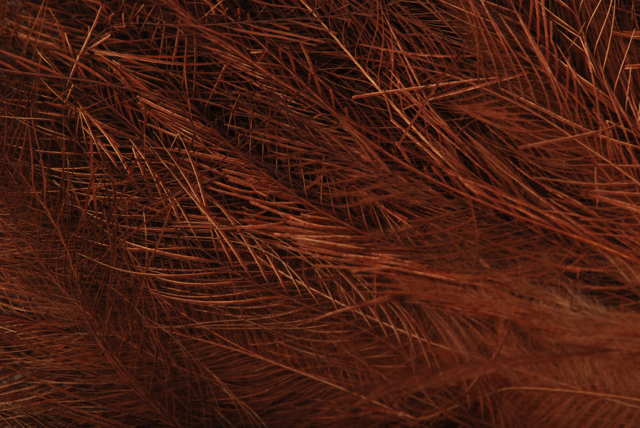
Painted wooden hair ornament topped by emu feathers. It is decorated with geometric patterning, highlighted in white pigment and circular motifs.
Wood & Emu Feather Head Ornament for Dancing Ilma, Nyulnyul People, Northwestern Western Australia This finely preserved hair ornament combines emu feathers with delicate dot-painted woodwork. In the Museum’s original 1920s documentation, this ornament is described as intended to enhance the appearance of men dancing at ‘Corroboree’. This was a generic Western term for the many and varied forms of large social gatherings among Aboriginal Australian people, and covered all different kinds of ceremony, theatrical performance and dance from one side of the continent to the other. In the western Kimberley area of northern Western Australia where the Nyulnyul people live, various kinds of public performance exist that combine song, dance and storytelling. Among the Nyulnyul and the closely related Bardi, this combined performance art is called ilma. Ilma performances are rather like Western ballet or musical theatre, and each performer takes on a certain character to retell the particular story theatrically, accompanied by song and music. Wood, feather, vegetable fibre, mineral pigment. Early 20th Century. Collected by Dr Emile Clement and sold to the Horniman Museum in 1926.



